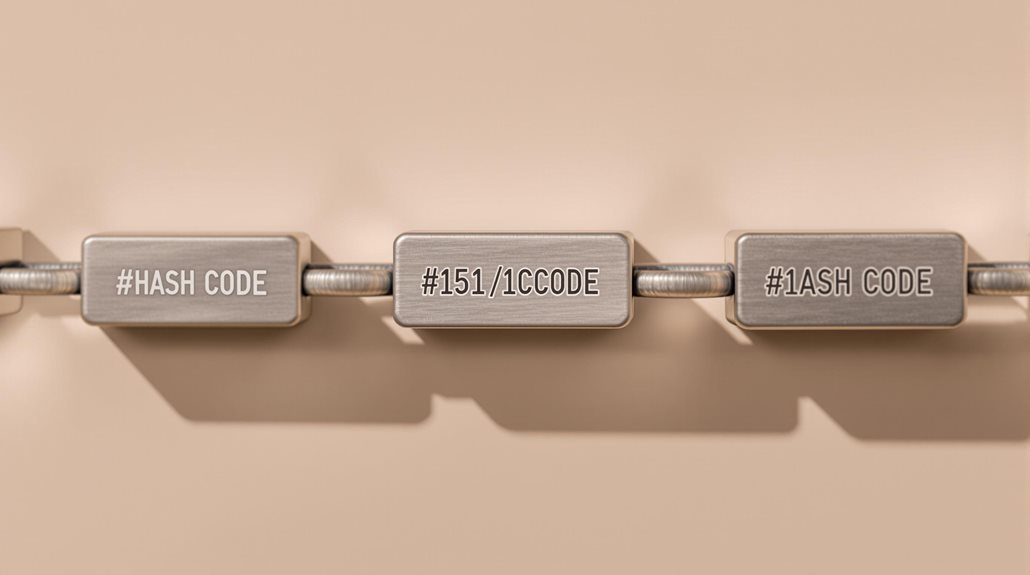A blockchain is a secure digital system that records information across a network of computers. It stores data in connected "blocks" that link together like a chain, making it very difficult to hack or change past records. The technology was first created in 2008 for Bitcoin cryptocurrency but now helps track everything from supply chains to healthcare records. This revolutionary system continues to transform how businesses and organizations share information.

Blockchain technology is revolutionizing how digital information is stored and shared. It's a special type of database that keeps records of transactions across a network of computers, with no single person or company in control. The system was created in 2008 by someone using the name Satoshi Nakamoto, who developed it for the Bitcoin cryptocurrency. These transactions are processed through smart contracts that automatically execute when specific conditions are met.
Think of a blockchain as a digital ledger that's copied and shared among many computers in a network. When someone makes a transaction, it gets grouped with other transactions into a "block." These blocks are connected in a chain using complex math and codes, making them extremely difficult to change or hack. Each block contains a timestamp and a unique code that links it to the previous block.
What makes blockchains special is that they're transparent and secure by design. Anyone in the network can see all transactions, but once information is recorded, it can't be changed. The system uses something called consensus mechanisms, like proof-of-work or proof-of-stake, to make sure everyone agrees on which transactions are valid. The cryptographic techniques ensure the immutability of all recorded data.
There are different types of blockchains for different uses. Public blockchains, like Bitcoin's, are open to anyone. Private blockchains are used by businesses and only allow certain people to participate. Hybrid blockchains combine features of both types.
While cryptocurrencies were the first use of blockchain technology, it's now being used in many other ways, including supply chain tracking, healthcare records, voting systems, and smart contracts. PwC forecasts suggest blockchain could generate over $3 trillion in business value by 2030. The World Food Programme uses blockchain technology to distribute aid and manage supply chains efficiently.
The technical side of blockchains involves several key parts working together. Each block contains transactions arranged in a special tree-like structure called a Merkle tree. The system uses public and private keys, which are like digital signatures, to keep transactions secure.
Network participants, called nodes, keep copies of the entire blockchain to help verify new transactions.
Blockchain's impact goes beyond just recording transactions. It's creating new possibilities for how we handle digital information and trust online. Since there's no need for a central authority to oversee transactions, it can make processes more efficient and less expensive.
The technology continues to evolve, with new applications being developed across various industries, from finance to healthcare and beyond.
Frequently Asked Questions
How Much Money Can I Make Investing in Blockchain Technology?
Returns on blockchain investments can vary dramatically. While some early Bitcoin investors became millionaires, others have lost money.
The blockchain market has seen both massive gains and steep drops. In 2021, the total crypto market hit $3 trillion before falling sharply.
There's no guaranteed profit – it's a volatile space where values can change quickly. Many factors affect returns, including market conditions, regulations, and technology changes.
Are Blockchains Completely Secure Against All Types of Cyber Attacks?
No, blockchains aren't completely secure against all cyber attacks.
While they're designed to be hard to hack, they still face several security risks. Common threats include smart contract bugs, 51% attacks, and phishing scams.
In 2022, hackers stole $3.7 billion from crypto platforms, though this dropped to $1.7 billion in 2023.
While blockchain technology offers strong security features, it's not immune to vulnerabilities and continues to be a target for cybercriminals.
Which Programming Languages Are Best for Developing Blockchain Applications?
The most popular programming languages for blockchain development are Solidity, C++, and Python.
Solidity's mainly used for Ethereum smart contracts, while C++ is Bitcoin's go-to language. Python's great for its simplicity and versatility across different blockchain projects.
Other important languages include Java, which powers Hyperledger Fabric, and JavaScript for web3 development.
Newer languages like Rust and Go are also gaining traction in the blockchain world.
Can Governments Shut Down or Regulate Blockchain Networks?
Governments can't completely shut down blockchain networks due to their decentralized design.
There's no single point of failure since the network runs on many computers worldwide.
However, governments can regulate blockchain activity by targeting exchanges, enforcing KYC rules, and taxing transactions.
They can also restrict access through internet shutdowns, but this only limits access temporarily – it doesn't destroy the network or its stored data.
How Much Energy Does Maintaining a Blockchain Network Typically Consume?
The energy consumption of blockchain networks varies dramatically depending on how they work.
Bitcoin, the largest blockchain, uses as much electricity annually as Thailand – about 127-160 TWh, or 0.6% of global power.
However, newer blockchains like Ethereum use far less energy. They've switched to more efficient systems that cut power use by 99.95%.
Cardano, another blockchain, only needs 6 GWh per year – a tiny fraction of Bitcoin's usage.





